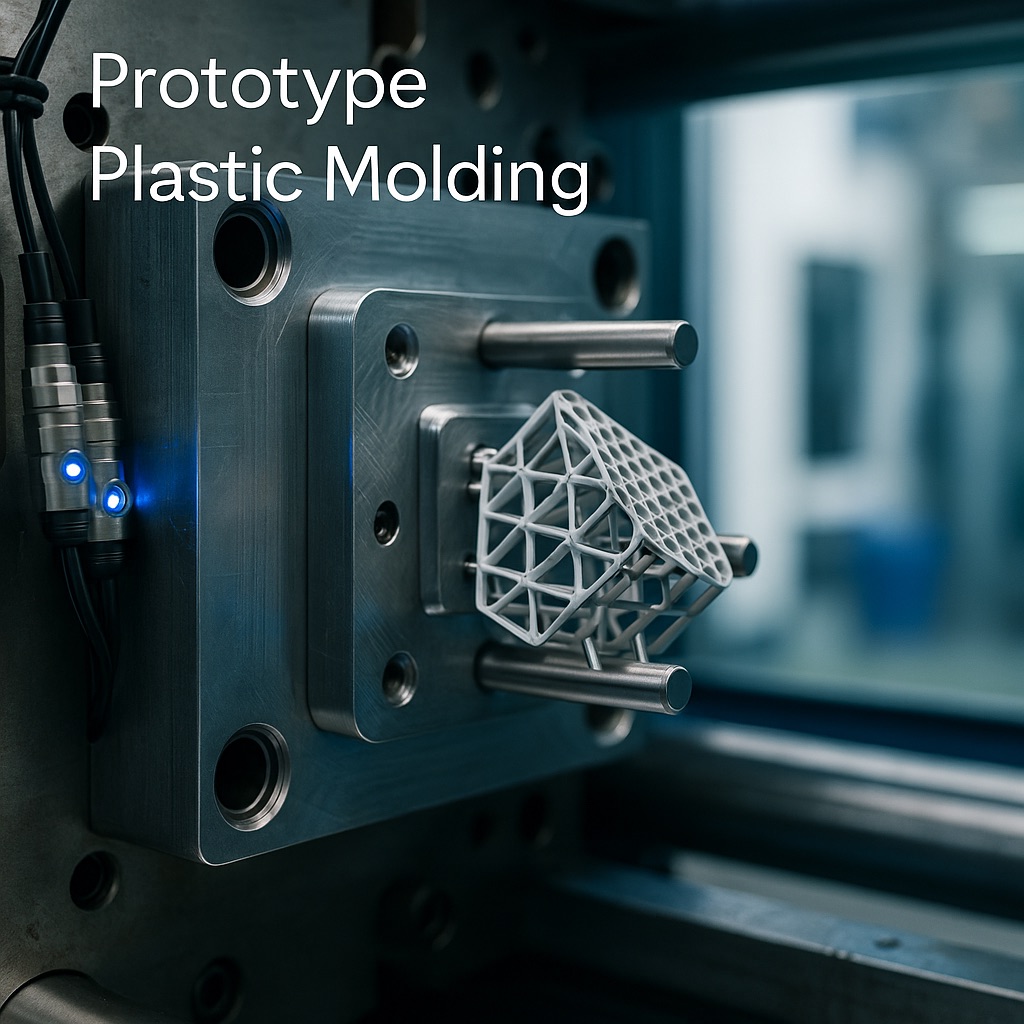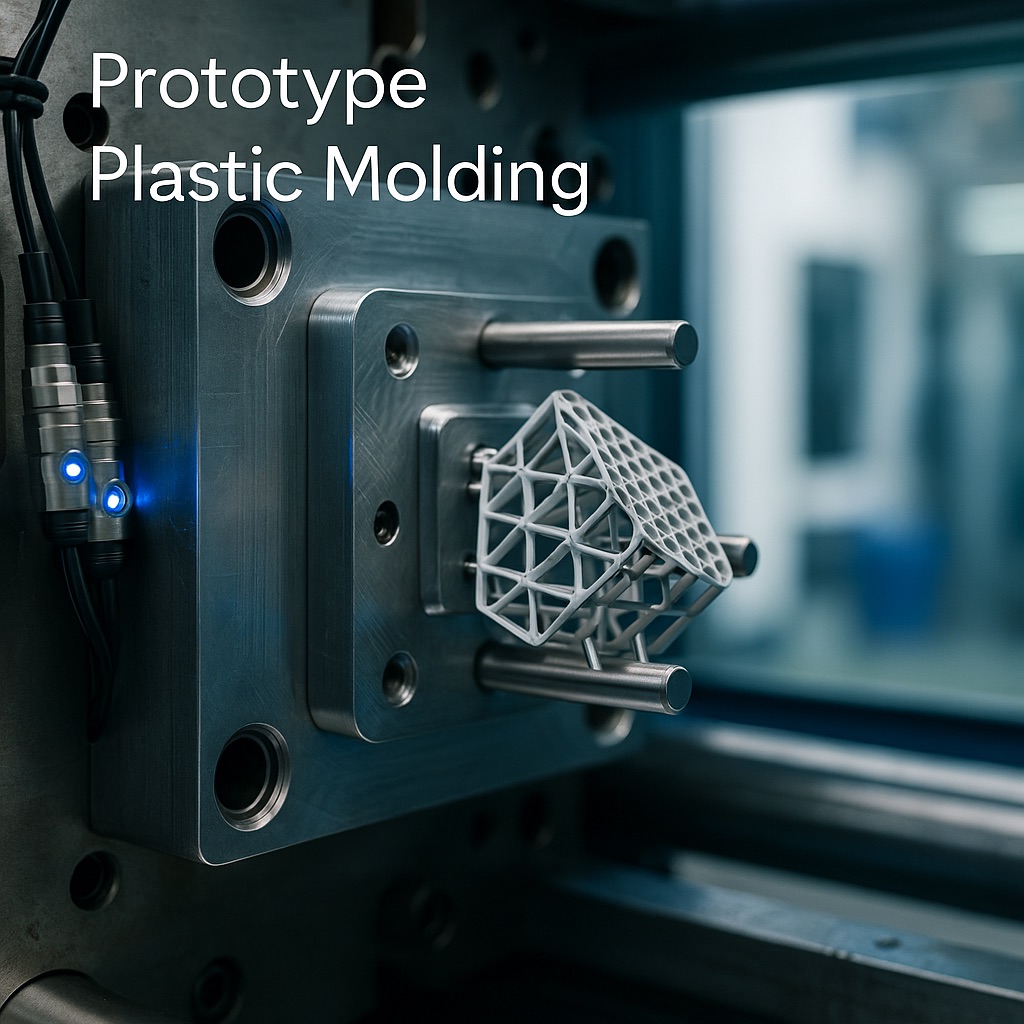Accelerate Design Validation With Prototype Plastic Molding for Complex Parts
Accelerate Design Validation With Prototype Plastic Molding for Complex Parts
Speed is the ultimate competitive edge when you’re iterating intricate geometries—think lattice–reinforced housings, micro-fluidic channels, or multi-material over-molds. Conventional steel tools can’t keep pace with rapid CAD spins, but prototype plastic molding bridges the gap between 3-D printing and full-scale production tooling. By combining aluminum or hybrid P20 inserts with scientific molding discipline, you can prove manufacturability, lock critical tolerances, and gather functional data in a matter of weeks instead of months.
1 | Why Prototype Plastic Molding Outruns 3-D Printing and CNC Alone
| Validation Need | 3-D Printing | CNC Machining | Prototype Injection Molding |
|---|---|---|---|
| True Production Resin | Limited | Limited | Yes – PP, PC, PEEK, LCP, etc. |
| Accurate Shrink & Warp | No | Partial | Yes – matches mass production |
| Fine Textures & Gates | Layer lines | Tool marks | SPI & VDI finishes; real gate vestige |
| Unit Cost @ 1 000 pcs | Highest | High | Lowest |
Takeaway: Print or mill for concept proofs, but switch to prototype molding when you must validate gate positions, knit-line strength and assembly fit in the actual production resin.
2 | Tooling Options & Shot Life
| Tool Type | Build Time | Shot Life | Best Use-Case |
|---|---|---|---|
| Aluminum (Al 7075/6082) | 2–3 weeks | 5 000–25 000 | Quick T-samples, cosmetic review |
| Hybrid P20 Inserts in Al Base | 3–4 weeks | 20 000–80 000 | Bridge-to-scale, limited glass-fill |
| Printed Conformal Cores | 1–2 weeks | 1 000–5 000 | Cooling studies, complex channels |
3 | Design Rules That Keep Prototype Molds Agile
-
Steel-Safe Allowances – leave 0.25 mm stock on snap-fits or critical sealing ribs so tweaks are EDM-quick, not re-cut-painful.
-
Uniform Walls (1.5–3 mm) – PP and ABS fill beautifully in aluminum, but thick sections still sink. Core them.
-
Generous Draft (≥ 1°) – softer aluminum nicks easily; extra draft prevents galling on sharp corners.
-
Simplify Side Actions – substitute hand-loaded inserts for hydraulic sliders if shot count is under 10 000.
-
Gate Placement for DOE – design two interchangeable gate bushings; compare fiber flow and weld-line strength without a new tool.
4 | Process Window Lock-In
| Parameter | Prototype Target | Why It Matters for Validation |
|---|---|---|
| Melt Temperature | Production ± 10 °C | Replicates shear/viscosity for gating study |
| Mold Temperature | 40–80 °C (resin-specific) | Gets real shrink and gloss data |
| Cavity Pressure | Sensor-triggered V/P switchover | Transfers directly to steel tool DOE |
| Cooling Time | 10–20 % over final spec | Ensures complete pack in softer aluminum |
5 | Validation Sprint Timeline (30 Days)
| Day | Milestone | Deliverable |
|---|---|---|
| 0 | CAD + CTQ upload | DFM & Moldflow pack in 48 h |
| 7 | Tool steel cut | Progress photos |
| 18 | T-1 Samples | 30 pcs + short-shot study |
| 21 | Steel-safe tweak | If required, 48 h turnaround |
| 25 | DOE & Process Window | CpK ≥ 1.67 on CTQs |
| 30 | Pilot Lot 500 pcs | Functional / regulatory tests begin |
6 | Cost & Risk Reduction Snapshot
| Metric | Conventional Steel Tool | Prototype Mold Path |
|---|---|---|
| CapEx | US $35 000 | US $8 400 |
| Lead Time | 8–10 weeks | < 4 weeks |
| ECO Delay | 2–3 weeks | 2–3 days |
| Early-market revenue | None | Yes – sell pilot units |
7 | Common Pitfalls & Pro Tips
| Pitfall | Prevention Tactic |
|---|---|
| Aluminum wear with 30 % GF PA | Switch to hybrid P20 inserts or coat the flow-front area. |
| Gloss shift between Al tool and H13 production | Specify identical SPI finish and duplicate cooling layout early. |
| Warp surprises in steel | Run Moldflow warp with aluminum mold temp; match delta-T to steel design. |
8 | Integrate Prototype Molding Into Your Agile Hardware Loop
-
Sprint Design → Prototype mold in 3 weeks
-
Field & Lab Validate → collect failure modes, cosmetic feedback
-
Iterate CAD (steel-safe) → overnight insert swap
-
Bridge Production → 5 000 – 20 000 pcs fund final tooling
-
Scale to Hardened Steel → process window already proven, no re-validation lag
9 | Why Partner With TaiwanMoldMaker.com for Prototype-Speed Precision
-
48-Hour DFM + Costing – gate, draft, cooling, and steel-safe zones in one PDF.
-
Prototype-to-Production Credits – up to 60 % of aluminum tool cost credited toward multi-cavity H13.
-
On-Site Simulation & SPC – cavity-pressure sensors + DOE on T-1, not T-3.
-
Integrated Finishing – paint, EMI shield, laser-etch handled in the same plant, avoiding shipment delays.
???? Quick Links to Core Services
Ready to Slash Validation Time?
Upload your CAD files and CTQ list to TaiwanMoldMaker.com. Receive a full DFM report, costed timeline, and prototype-molding quotation within 48 hours—so your complex part reaches users weeks ahead of schedule.










